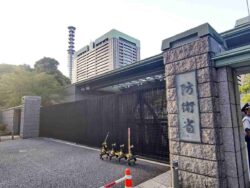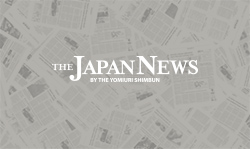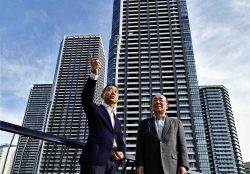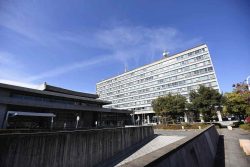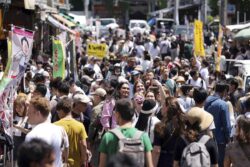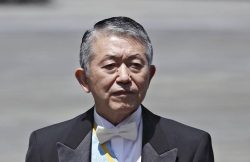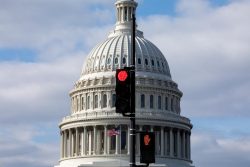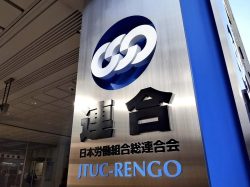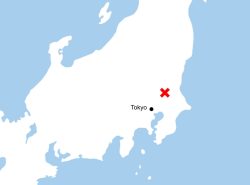‘Sympathy Budget’ to Be Focus in Tariff Negotiations; U.S. President Trump Calls Over ¥200 Billion Annual Japanese Support for American Troops Insufficient

The U.S. military’s Yokota Air Base
15:40 JST, April 19, 2025
The so-called sympathy budget, the money paid by Japan to defray the costs of stationing U.S. forces on its territory, is expected to be a point of contention in the two countries’ negotiations over U.S. tariff policy.
In an existing agreement between Japan and the U.S., the two countries decided that Japan would provide a total of ¥1.0551 trillion from fiscal 2022 to fiscal 2026. However, U.S. President Donald Trump is unsatisfied with this, as he says the amount is too small.
The Japan-U.S. Status of Forces Agreement stipulates that the expense of stationing U.S. troops in Japan is in principle to be shouldered by the United States. But Japan began sharing some of this cost in 1978, when it agreed to pay maintenance expenses for American base facilities and social services costs for employees working on those bases, as the United States was going through fiscal difficulties at the time.
The term “sympathy budget” took hold after then Director General of the Defense Agency Shin Kanemaru said during a Diet session, “It would be fine [for the Japanese government] to show sympathy [to the United States] if it would enhance trust.”
The two governments concluded a special agreement in 1987, expanding the range of payments to include base salaries of employees at U.S. bases as well as costs for utilities and training relocation, among other things.
Under the current special agreement, which has been in place since fiscal 2022, Japan’s part of the bill averages about ¥211 billion per year, money which the government has dubbed “a budget for strengthening the alliance,” with the aim of boosting the capacity of the Japan-U.S. alliance to respond to and deter threats.
Under the fiscal 2025 budget, Japan will shoulder total costs of ¥227.4 billion to host U.S. forces. This amount includes ¥141.4 billion for the basic salaries of employees at U.S. bases; ¥35.6 billion for the costs of upkeep on facilities provided to U.S. forces, such as maintenance of aircraft hangars, in order to maintain the rapid response capabilities of U.S. forces in Japan; and ¥13.3 billion to pay for utilities at U.S bases in Japan. A new round of negotiations with the United States on the division of costs is expected to reach its the most important stage in the second half of 2026.
Trump is accusing Japan and other allies of free riding on U.S. security. In his meeting with economic revitalization minister Ryosei Akazawa on Wednesday, the president reportedly reiterated his claim that Japan’s cost-sharing is too small.
But Japanese defense officials say the issue should be treated as separate from the tariff negotiation.
“[The cost of hosting U.S. forces in Japan] is shared based on the Japan-U.S. agreement. There is no reason to change that,” Defense Minister Gen Nakatani told reporters on Friday. Nakatani also said that he understands Japan is providing as much support as it can in the defense field.
"Politics" POPULAR ARTICLE
-

Japan to Support Central Asian Logistics Route That Bypasses Russia, Plan to Be Part of Upcoming Summit in Tokyo
-

Japan to Tighten Screening of Foreigners’ Residential Status by Providing Information of Nonpayment of Taxes
-
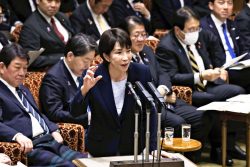
Takaichi Cabinet Approval Holds at 72% as Voters Back Aggressive Fiscal Stimulus, Child Benefits
-
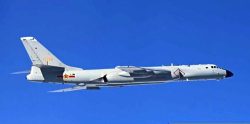
Chinese, Russian Bombers Flew Unusual Path by Heading Toward Tokyo; Move Likely Meant to Intimidate Japan
-

Takaichi Meets Many World Leaders at G20 Debut in Johannesburg; Speaks with Heads of Countries Including Italy, U.K., Germany, India
JN ACCESS RANKING
-
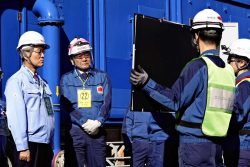
Keidanren Chairman Yoshinobu Tsutsui Visits Kashiwazaki-Kariwa Nuclear Power Plant; Inspects New Emergency Safety System
-
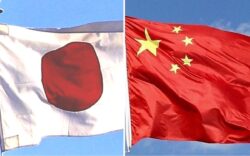
Imports of Rare Earths from China Facing Delays, May Be Caused by Deterioration of Japan-China Relations
-
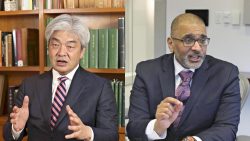
University of Tokyo Professor Discusses Japanese Economic Security in Interview Ahead of Forum
-
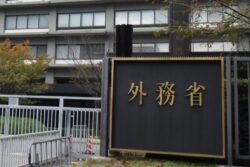
Japan Pulls out of Vietnam Nuclear Project, Complicating Hanoi’s Power Plans
-

Govt Aims to Expand NISA Program Lineup, Abolish Age Restriction


